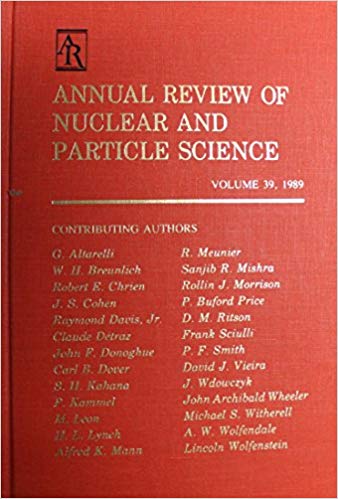Terrestrial Effects of Nearby Supernovae and Gamma-Ray Bursts
IF 8.4
2区 物理与天体物理
Q1 PHYSICS, NUCLEAR
Annual Review of Nuclear and Particle Science
Pub Date : 2025-06-10
DOI:10.1146/annurev-nucl-121423-101055
引用次数: 0
Abstract
Exploding stars have long been considered a threat to life on Earth. While early studies were speculative, modern research is based on advanced observations, theory, and modeling. This review examines supernova explosions, γ-ray bursts (GRBs), and kilonova outbursts, which are major sources of ionizing radiation in galaxies. This radiation can harm Earth-like biospheres by destroying stratospheric ozone, increasing exposure to solar ultraviolet, and producing cosmic-ray muons that penetrate belowground and underwater. Using recent work, we calculate rates for nearby explosions based on distance from the Earth and ionizing radiation dose. Over the Earth's history, core-collapse supernova cosmic rays, γ-rays from Type Ia supernovae, X-rays from Type IIn supernovae, and γ-rays from long GRBs have likely caused significant biosphere damage. However, short GRBs and kilonovae are less concerning. Future research could address open questions through nuclear and particle experiments, astronomical observations, and studies in climate, geology, radiation, and evolutionary biology.附近超新星和伽马射线暴对地球的影响
长期以来,爆炸的恒星一直被认为是对地球生命的威胁。早期的研究是推测性的,而现代的研究是基于先进的观察、理论和模型。本文综述了超新星爆炸、γ射线暴(GRBs)和千新星爆发,它们是星系中电离辐射的主要来源。这种辐射会破坏平流层的臭氧,增加太阳紫外线的照射,并产生穿透地下和水下的宇宙射线μ子,从而损害类地生物圈。利用最近的工作,我们根据与地球的距离和电离辐射剂量计算了附近爆炸的速率。在地球的历史上,核心坍缩超新星的宇宙射线,Ia型超新星的γ射线,IIn型超新星的x射线,以及长grb的γ射线都可能造成严重的生物圈破坏。然而,短伽马射线暴和千新星则不那么令人担忧。未来的研究可以通过核和粒子实验、天文观测以及气候、地质、辐射和进化生物学的研究来解决悬而未决的问题。
本文章由计算机程序翻译,如有差异,请以英文原文为准。
求助全文
约1分钟内获得全文
求助全文
来源期刊
CiteScore
21.50
自引率
0.80%
发文量
18
期刊介绍:
The Annual Review of Nuclear and Particle Science is a publication that has been available since 1952. It focuses on various aspects of nuclear and particle science, including both theoretical and experimental developments. The journal covers topics such as nuclear structure, heavy ion interactions, oscillations observed in solar and atmospheric neutrinos, the physics of heavy quarks, the impact of particle and nuclear physics on astroparticle physics, and recent advancements in accelerator design and instrumentation.
One significant recent change in the journal is the conversion of its current volume from gated to open access. This conversion was made possible through Annual Reviews' Subscribe to Open program. As a result, all articles published in the current volume are now freely available to the public under a CC BY license. This change allows for greater accessibility and dissemination of research in the field of nuclear and particle science.

 求助内容:
求助内容: 应助结果提醒方式:
应助结果提醒方式:


